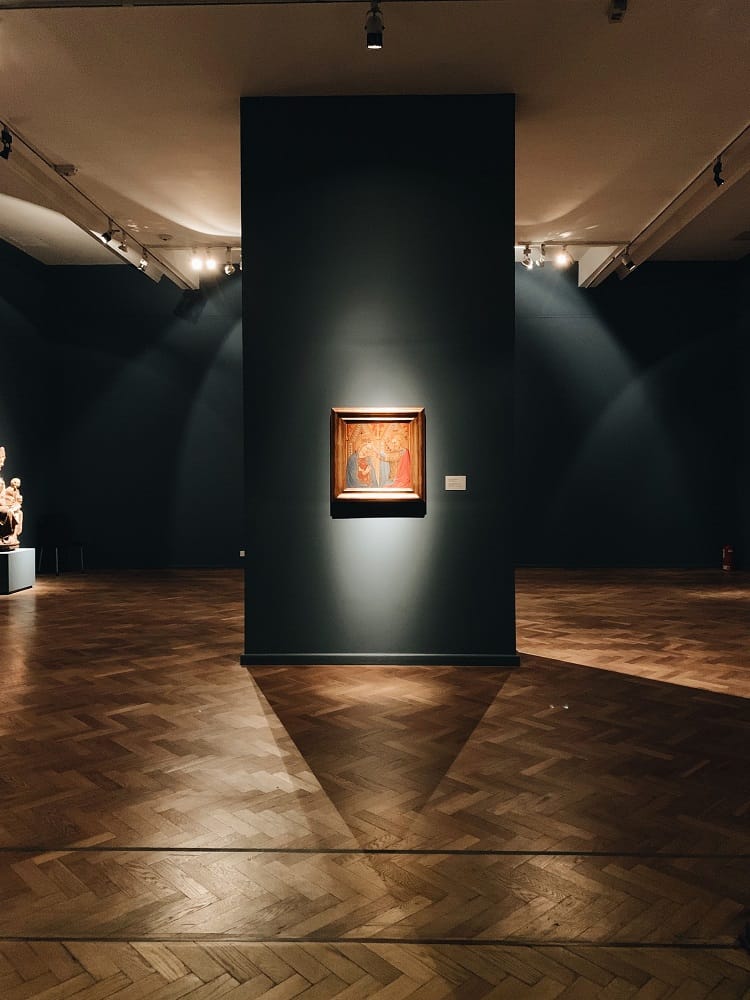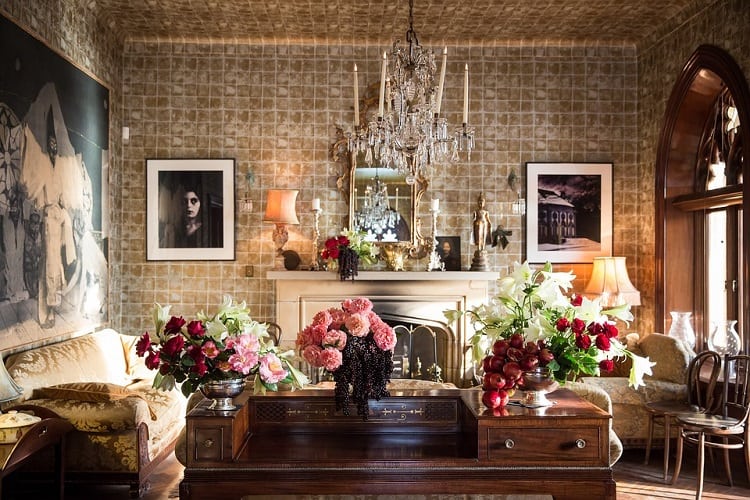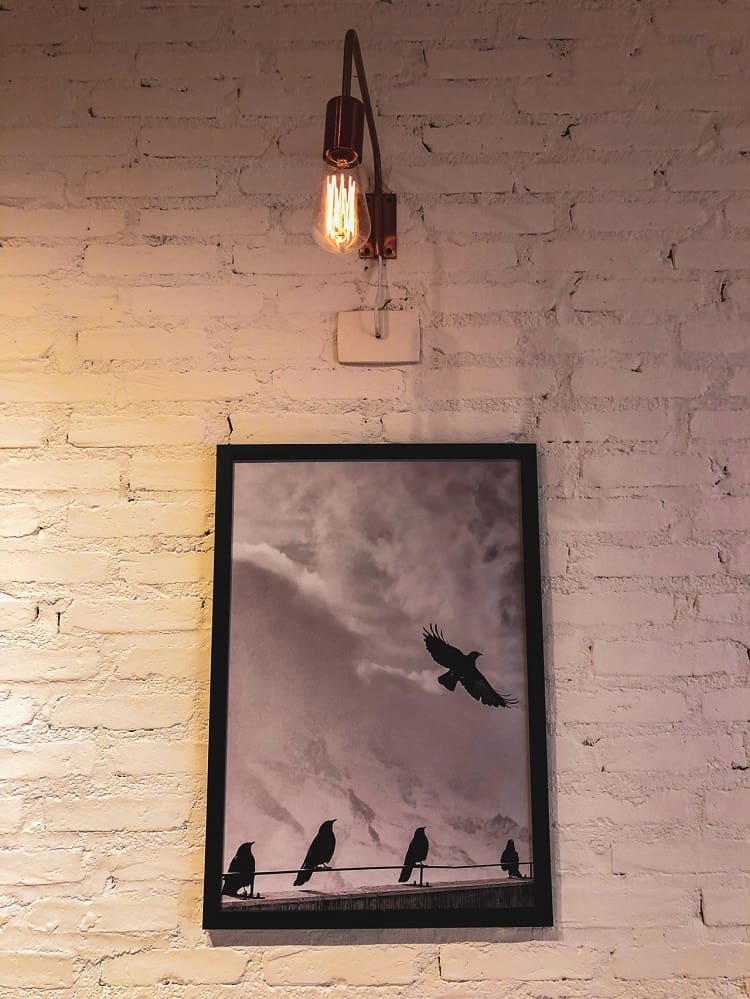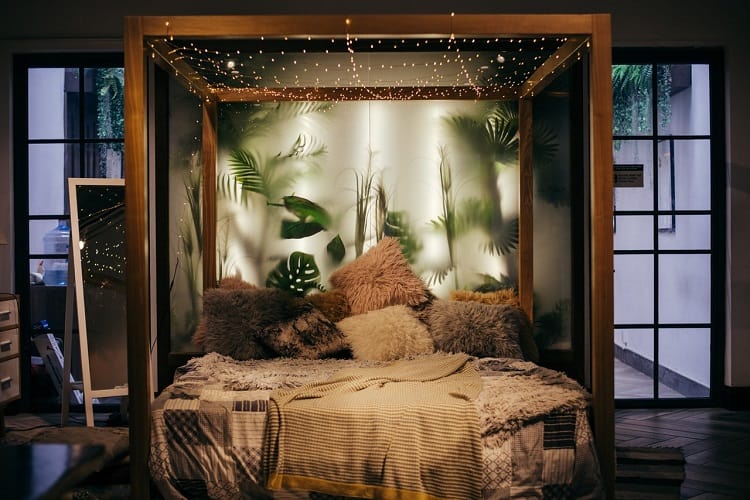You bought a beautiful piece of art for your wall, but it still feels like something is missing? Sometimes it is not enough to just hang a picture on the wall, and since regular lighting is not always so flattering, your artwork needs a boost.
“There’s nothing better than a beautifully lit piece of art.” – Richard Mishaan, AD100 designer
You can achieve a more eye-catching effect by carefully adding special lighting to your art. You can either directly illuminate it or simply have a piece live in a pleasantly lit room. Of course, there are several things you need to consider before starting your new DIY project.
In today’s article, we will give you some tips and suggestions on how to do it properly, because too much of the wrong light can steal the piece’s beauty and even damage it.
Different types of lighting suitable for your art

Since art is delicate, you cannot just place any light anywhere and risk light damage. Sometimes it is better not to use special lighting if you are not willing to do it correctly. After all, you want that painting to last and admire its beauty for years.
Ceiling-mounted lights

This is an elegant-looking solution that can light up your art wall. Ideally, you should adjust the light to a 30-degree angle, so that the light beam hits the center of the artwork. If you go just ten degrees higher or lower, the effect would not be the same – you’ll either get reflective glare or some intense shadows.
Wall washers
Wall washing is often used in contemporary design when a large surface needs to be accented with light, but it can also be great for paintings or 3D metal signs. With this type of lighting, you are not pointing the light directly to the object, the accent is more on the wall, but at the same time, it does the trick for art too. Wall washers can be placed on the ceiling, floor, or anywhere on the wall.
Track-lighting
Although some will claim that track lights are not the prettiest, we have to disagree on that. This is by far the type of accent lights we usually see. It is widely used in museums and galleries, and it is also suitable for your home. These ceiling lights are flexible and can be moved till you find the perfect angle and position that will beautifully lighten your artwork.
Painting lights
These are usually smaller, decorative lights that can be mounted even on the frame. But even when they are installed on the wall, close to the artwork, they brighten it up and create a sense of intimacy, where it almost seems like the art is coming out of a shadow.
Lamps used for this type of lighting have to have a very low voltage, and they can rarely be enough to lighten up the entire room.
The importance of a picture frame

Even though we are talking about lighting, the frame of a piece plays a significant role in here as well. And we are not talking just about its color. The material and texture can sometimes be too reflecting, and if the picture is framed with glass, the situation becomes even more complicated.
- In case your beloved piece of art is trapped behind glass, you have to really think about the lighting and adjust the angle precisely to avoid glare. It goes the same for oil paintings or pieces with a surface texture
- In case you want to mount picture lights, make sure that the frame is solid enough to support the fixture. In other cases, that involve ceiling or wall-mounted lights, you can use minimal frames or no frames at all.
- If you are in charge of the framing process, do not pick frames that are too shiny and wide because they will also have a reflection.
How to preserve your painting and avoid negative reactions to light

Paintings are particularly sensitive and vulnerable. Thick layers can easily start to crack and crumble, colors can change their shade over time, etc. And all this is due to exposure to intense lighting.
Do you remember that trick, where a magnifying glass can burn a piece of newspaper or a leaf when the sun rays hit on the right angle? Pretty much the same thing happens to art, but over a much longer period of time. The deterioration process is so slow that at the beginning, you will barely be able to notice the difference.
Two great enemies of paintings are the UV light and the heat. So this implies that direct exposure to natural sunlight is a huge no-no. Sunlight can fade your painting’s colors, so make sure that they are not looking directly towards the window.

So what can you do to protect them? Avoid halogen lights and make sure that the light system you are using has UV filters on. The best solution is to use LED lights. They are the safest because they do not emit UV, and they barely heat up.
Bottom line
If you are an art lover or simply appreciate art, we are sure you understand how important this aspect is. Lighting has to be done properly, so if you do not want to hassle with it, better leave it as it is. However, the least you can do is to avoid exposing your pieces to direct sunlight.
Having a piece of art or more in your home is really something special. Everyone enjoys art, its serenity, and stunning effect that makes us stop and stare, and feel a different kind of joy every time.

Author’s bio: Since traveling to different places fascinates her, Karen takes advantage of her escapades to see the world’s best home interior designs and styles. She has a degree in Interior Design and is practicing for several years now. When she’s energized, you will often see her name on different blogs as she writes on some of the best design ideas.




